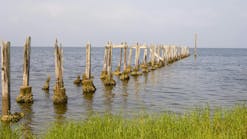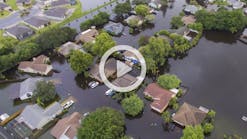Emerging Contaminants: Advice for MS4 Programs
One of the most significant rising issues in the U.S. is emerging contaminants. The American Chemical Society maintains a chemical registry that lists 204 million organic substances, alloys, coordination compound minerals, mixtures, polymers and salts. Of these, a relatively recent article published in 2020 in Chemical and Engineering News estimates that more than 350,000 of the listed chemicals and chemical mixtures are in commercial production and use. Contrast this available universe of potential pollutants with the number of identified priority pollutants listed by the U.S. Environmental Protection Agency (126), limits on contaminants for drinking water in the Safe Drinking Water Act (90) or the number of chemicals/compounds on the Toxic Pollutant List (65). In addition, the EPA has published 59 effluent guidelines (EGLs) for wastewater that are incorporated into NPDES permits. Identifying emerging contaminants is left primarily to research entities.
The barriers to identifying new contaminants are numerous: lack of funding, testing methodologies and standards. Since the regulatory system for MS4s was not developed to identify emerging contaminants in the environment, a proactive approach is needed by MS4s in the short and medium-term. In the long term, the regulatory system for MS4s must be changed to accommodate the emerging contaminant challenge.
SCM implementation
MS4s should ensure that their post-construction programs protect the most important receiving water beneficial uses, one of which is domestic water supply. For MS4s that draw on groundwater resources for domestic supply, limiting infiltration may be considered a best practice in the context of highly soluble contaminants. If surface water sources are used for domestic supply, urban runoff should be directed away from intake areas. This is simply impractical in most instances, however. Southern California gets a significant portion of its domestic water from the Colorado River. For instances like this, advanced treatment may be required as emerging contaminants are identified in source water.
The long term
We cannot rely solely on end-of-pipe treatment practices to remove many of the chemical constituents commonly found in runoff. The volumes are too large, the flows and constituent loads are too episodic, and the methods for treatment for many of these constituents either lack efficacy or are simply unknown.
Over the long term, control of chemicals that are pollutants in receiving waters must be done at the source. This will require a new national regulatory scheme that assesses the potential of a chemical to enter surface waters, its persistence and its impact to beneficial uses and on human health. The cost of such an evaluation is likely to be relatively low in the context of the overall cost to bring a chemical or compound to market. The manufacturer should be responsible for completing this process and consideration could be made for these manufacturers to potentially receive some level of future indemnification once it is completed.
Summary
The three decades since the Clean Water Act was implemented for stormwater has shown tremendous progress in improving receiving water for known contamination issues. The problem is that unknown problems are now the primary threat, and the current permit system was not designed to address emerging contaminants.Future efforts and leadership are needed to not only identify and list these emerging contaminants, but to decide on the most effective and efficient ways to reduce – or even eliminate – these impactful contaminants.
Seth Brown
Seth Brown has over 25 years of experience in the water sector and is the Principal and Founder of Storm and Stream Solutions, LLC, a consulting firm providing a range of services from policy and alternative project delivery analysis in the stormwater sector to facilitation and training services focused on stormwater topics. He was the Director of Stormwater Programs at the Water Environment Federation from 2010-2015 and is currently the Executive Director of the National Municipal Stormwater Alliance, which is a 501.c.3 representing stormwater-focused organizations in 24 states across 9 of the 10 U.S. EPA regions with a network that is comprised of over 4,000 MS4s.
Seth has a Ph.D. in civil engineering from George Mason University with a research focus on socio-economic modeling of incentive-based investments of green stormwater infrastructure on private properties. He leads courses in Green Infrastructure and Innovative Water Partnerships at Virginia Tech and the University of Maryland at Eastern Shore and is a licensed professional engineer in the state of Maryland.
Scott Taylor
Scott Taylor, P.E., D.WRE, FASCE, is a project director with AtkinsRéalis in San Diego, CA.






